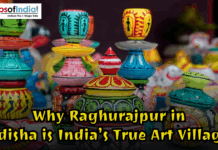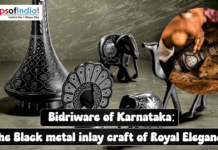It is widely known that art and artefacts are considered as an investment option too for many people. However, it is advised by business as well as art experts that investing in art is a long-term investment and the returns are difficult to forecast. Hence, it is better to buy a piece of art that pleases your eyes and not go just by the fame because art is not a very good liquid asset. In India this form of market will take time to grow. It is only recently that Indians have started owning and valuing pieces of art as an investment.
There are different ways of investing in art and artefacts. Some of them are listed below:
- Buying: If you are an avid art collector then you know that all that you are purchasing also has a resale value which can be high or low. A careful purchase usually involves checking the art indices, knowing about the artist and his specialities (some artists are good with a particular form of painting), knowing more about the particular piece of art, etc.
- Art Funds: It is not necessary to buy an art work to invest in an art work. It is possible to have portfolios with an organization that manages art fund. Examples of Indian art fund could be Copal and Edelweiss Securities. The most successful art fund (despite the 2009 global financial crisis) is The Fine Art Fund Group of London, with a majority of their team having acquired experience from Christie’s Auction House. It not only provides art investment services but also provides art advisory services.
- Geographical Arbitrage: There have been many cases where a piece of art had been bought from a local or regional auction house or art displays and sold for quite some money at the big international auction houses. An example for this is a Rodin sculpture which was purchased in a local Paris auction for $4.3 million in the year 2009 and 11 months later sold at Sotheby’s International Auction for $11.8 million, according to a report. Another case of geographical arbitrage is buying art work for less money from the developing or least developed countries or countries where a particular artist is not very popular and selling that piece of art to developed countries or places with a demand for the art work. The most important thing to keep in mind here is that such kind of arbitrage requires lot of patience, eye for such rare collectibles and at the same time it involves risk (lots of it!) as identifying a piece which could have huge demand is very difficult and requires a lot of research. However, heavy rewards could be enjoyed too as according to some sources the major reason for the success of the art auction house Leslie Hindman recently is nothing other than geographical arbitrage.
There are a few points which are important to be considered in case people are planning to start an art collection or invest in art. These are:
- Art works are illiquid and art markets are non-regulated hence forecasting the returns on an art work becomes very difficult. There is a possibility that you might have to stick with a piece of painting for 10 long years before it gives you satisfactory rate of return in the market.
- Investing in art is different from other conventional forms of investment as explained by Michael Moses (co-founder of the Mei-Moses Art Index) because of two reasons: firstly, art works are heterogeneous in nature as each piece of art is different hence the same piece of advice cannot be given for all the art works. Secondly, Art works unlike other forms of investment do not provide you with a steady source of income and the money that goes into purchasing a piece of art is locked in for a long haul.
- For the first-timers, buy from an established dealer (so you will be assured of genuine products) and invest only in things that you like.
- Keep art work as a part of your portfolio like 10% to 20% of your investment portfolio could consist of art work. Keep a separate budget for investing in art and do not mortgage your valuables for purchasing a art works.
Other new things gaining attention of investors:
- Parmesan Cheese: It is called the ‘king of cheese’ and is attracting attention of investors. The Chicago Mercantile Exchange allows hedgers and speculators to bet on cheese prices. The contract is cash settled. Also there are banks in the provinces of Italy which take Parmesan Cheese as collateral against small loans for the Cheese makers.
- Wine: Investing in wine can be done in two ways: First, by buying and then reselling it and second, by investing in Wine funds. Just like in case of art works, wines are illiquid and do not provide with a fixed timely income to the owner. There needs to be investment on professional wine storage facility which maintains temperature and in case wine is stored at home then insurance would be required. The wine investment market is unregulated hence it is best to consult an adviser. While investing people usually consider wines from the Bordeaux and Burgundy regions of France.
Also Explore :
- Investing in Systematic Investment Plans : What are SIPs, Benefits, How to invest
- India Inc Investing Abroad
- 10 Things To Know Before Investing In Equities
- Is Investing in Bank Equity a Safe Proposition?
- FDI Norms for NRIs Relaxed – Foreign Investments Anticipated
- Enhanced Foreign Investments Limit – Impact And Implications
- 10 Super Tips on Investing in Vintage Cars
- Corporate Tax in India – Impacting Investment
- How will FMC and SEBI Merger help the Investors?
- Foreign Direct Investment (FDI): An Introspection
- 100% FDI in Medical Device Manufacturing Allowed
- FDI And FDI Proposals In India
- How to Invest in Indian Share Market?
- Why is the Indian Rupee Depreciating?






